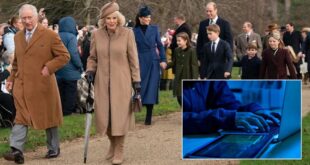Publish date:
18 February 2021
Prior to the pandemic, wig and scarf tying advice was very much an ad hoc service where referrals were sent via our IT appointments system which is called EPIC. Once I received a referral I would call the person to arrange the appointment. Most of the time it would be arranged around the person’s other appointments in the hospital. But, some people would want to come in specifically to see me and bring a relative or a friend to help to choose a wig.
It is helpful for me to see someone before their hair falls out as it helps me to give them advice about the style and colour. I can also find the nearest colour match to their real hair. Doing this reduces their anxiety. Planning for hair loss allows the person to feel more able to face the change in their appearance. It also helps them to deal with the added pressure of feeling a loss of identity which many people tell me they experience when they are going through cancer treatment. I also show people different ways of scarf tying as most opt not to wear a wig all the time. The scarves make a great alternative.
Since the pandemic, I have had to fit around other appointments so that people don’t have additional trips to the Cancer Centre. To reduce unnecessary visits I have also had to adapt to using telephone and video calls.
Here are a couple of examples come to mind about how the service has adapted to the current situation with the use of the virtual world:
Recently, a lady was referred to me after her treatment had been completed. Due to the treatment, the lady had lost a lot of her hair. I couldn’t assess her hair and colour, and how the treatment had affected it, without seeing her. So, first I called the lady to ask if she would like a wig and to tell her about how the service worked. Rather than ask her to come to the Cancer Centre unnecessarily, I offered her a video consultation and she immediately agreed.
When I video-called the lady, I could see that her hair was thin on the top and the hair by her nape was still long. This helped because I could see the colour and the length of her hair. I showed her a few pictures of hair styles from the catalogue and the closest colour match to her hair. She felt one of the wigs was a perfect match. I knew that the company that I order wigs from do a direct delivery to their customers, via the Royal Mail, so I arranged to get the wig sent to her by post. I reassured her that she could call me when the wig had arrived so that I could set up an appointment in which we would fit the wig, via video, and go through the wig care process.
Another time I visited the ward to see an inpatient who had been referred to the wig service. The ward receptionist informed me that the ward was closed to non-essential visits. The nurse in charge told me that the lady would like to see me because her hair was in the process of coming out. Again virtual technology came to the rescue, as it enabled me to see her, by video, and choose a wig which suited her. The lady was discharged from the ward and had her wig fitted in the Cancer Centre on her next outpatient appointment. She said she was very happy with the service since something that was making her feel vulnerable and anxious had been sorted out seamlessly.
These experiences during the pandemic have certainly sparked awareness in me of trying to find new ways to help people. Looking forward, I can see that post covid-19, if someone was too poorly to come to the Cancer Centre to choose or have a wig fitted, I can now offer an alternative.
If you’re having treatment at UCLH and will lose your hair ask your hospital doctor, nurse or a support and information specialist to refer you for wig and scarf tying advice. For more information visit our wig and scarf tying advice web page.
Source link


